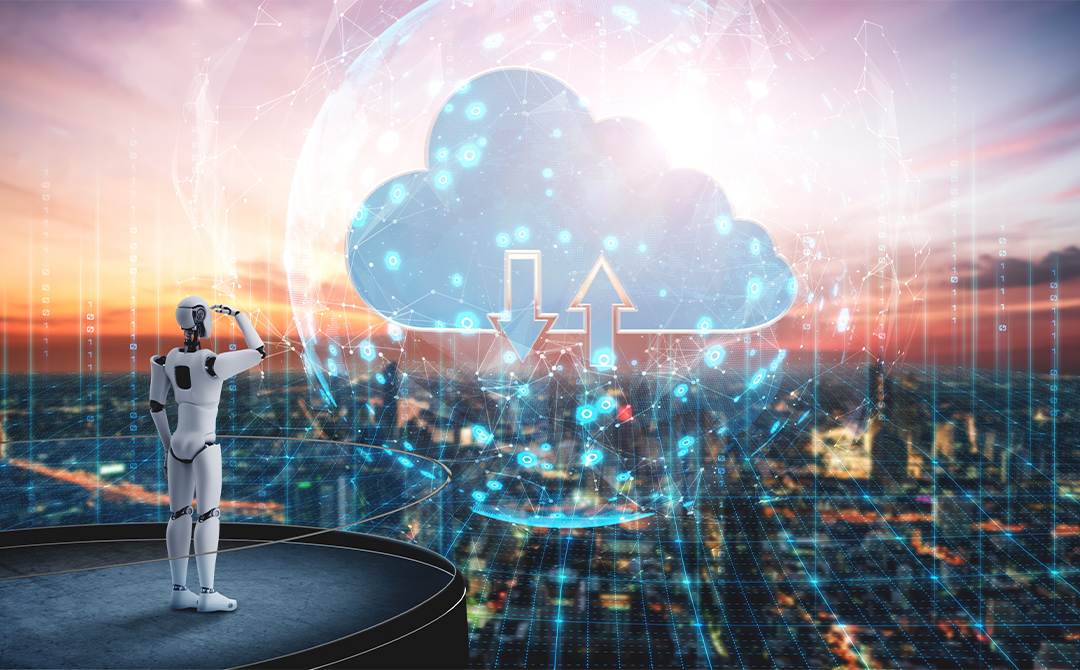
Our earlier blog in our series established Digital Twin as a strategic imperative for industrial resilience. A digital twin is not a standalone software; it is a living, digital replica whose effectiveness is defined by its interconnected technological backbone.
This blog details the three core engines—IIoT, Cloud & Edge computing, and AI/ML—that are essential for transforming fragmented data into autonomous intelligence.
The IT/OT Divide: The Costly Barrier to Situational Awareness
The greatest challenge facing manufacturers today is not a lack of data, but its fragmentation. This issue is most acute at the intersection of Information Technology (IT) and Operational Technology (OT), which create data silos that prohibit holistic visibility.
The Unassailable ROI Gap: The Price of Disconnected Data
The failure to unify this data is the primary bottleneck to realizing maximum ROI. A vast majority of companies (80–85%) are stuck in the "Proof of Concept" stage, where AI efforts are siloed and achieve low scaling success rates.
The financial consequence of this failure is visually compelling:
Source: Accenture: AI - BUILT TO SCALE
The difference in return on AI investments between companies in the Proof-of-Concept stage and "Strategic Scalers" equates to an average of US$110 million. This gap exists because Strategic Scalers have built the foundational data capabilities necessary to move AI from the sandbox to the enterprise.
- Strategic Risk: Failure to address this is existential, as 75% of C-level executives believe if they don't scale AI in the next five years, they risk going out of business entirely.
- The Root Cause: This massive gap exists because Strategic Scalers build a foundational data capability to power enterprise-wide AI, while PoC companies are unable to extract value from their siloed data.
- The Strategic Mandate: Failure to address this is existential. 75% of C-level executives believe if they don't scale AI in the next five years, they risk going out of business entirely.
The Manufacturing Mandate: Data Access and Use
The solution requires breaking down the IT/OT barrier to unlock data's true potential. Manufacturers must prioritize data access and utilization to move from manual processes to autonomous operations.
- The #1-way manufacturers plan to drive positive business outcomes over the next five years is through better use of data analytics.
- The challenge is acute: 40% more manufacturers believe they lack the ability to use data to make decisions to outpace the competition.
The path to closing the US$110M gap and becoming a Strategic Scaler is built on the cohesive integration of three core technological engines: the IIoT, Cloud & Edge computing, and AI/ML.
Engine 1: The Nervous System — IIoT driven Situational Awareness
The IIoT is the nervous system of the digital twin, comprising the sensors and smart machines that connect the physical and digital worlds.
- The Senses of the System: Smart devices are self and system-aware assets that acquire and process operational data. This high-fidelity data collection is the building block of situational awareness, allowing the asset to comprehend its performance and environment in real-time.
- AI-Driven Perception: Embedded AI and IoT technologies give rise to diverse machine-generated data sets which support new levels of situational awareness, providing real-time insights both in the cloud and directly in the field.
- Next-Generation Monitoring: Digital twins are virtual representations that enable real-time monitoring and the simulation of various scenarios.
Engine 2: The Brain & Memory — Scalable Cloud & Edge Computing
To solve data fragmentation and support real-time decision-making, the digital twin relies on a distributed, hybrid architecture—the Cloud and the Edge—acting as its massive Brain and Memory.
The Necessity of a Unified Data Platform
The core problem of the IT/OT divide is definitively solved by building a single, cohesive memory layer. Strategic Scalers invest in a data foundation that enables them to scale AI.
The metrics visually prove that data mastery is the absolute differentiator:
- Integration: 67% of Strategic Scalers have the ability to integrate external with internal data sets, compared to only 56% of PoC companies. This validates the need for a unified data platform to bridge the IT/OT gap.
- Accuracy: 61% of Strategic Scalers possess a large, accurate dataset, compared to only 38% of Proof-of-Concept companies.
Analysis of Investment and ROI
Current investments highlight the shift toward scalable platforms, with Process Automation and Cloud/SaaS leading the charge.
Source: Rockwell Automation: 8th Annual State of Smart Manufacturing Report
- Investment Priority: Our study reveals that the two most popular technology investments are Process Automation and Cloud/SaaS, both adopted by 63% of participants. This reflects the move to utilize cloud scalability to drive shop floor efficiency.
- ROI Drivers: However, when measuring which technologies have had the biggest ROI over the last year, Process Automation (33%) leads, followed by Cloud/SaaS (30%) and Industrial IoT (25%). This confirms that the data foundation (IIoT) and the resulting action (Automation) are where value is realized, but Cloud is the enabler.
Engine 3: The Intelligence — AI, Simulation & Autonomy
AI and Machine Learning (ML) are the intelligence that transform unified data and situational awareness into prescriptive, autonomous action.
The Path to Autonomy via Reinforcement Learning
Source: PWC-whitepaper: Unlock the Power of AI
- Next-Generation Automation: The combination of Artificial Intelligence with Digital Twins unlocks new potential, enabling Next-Generation Automation where the system learns to operate itself without regular human intervention.
- The Role of RL: PwC confirms that combining Digital Twins with Reinforcement Learning (RL) is key to achieving this autonomy. The RL agent trains within the twin’s risk-free simulation environment, learning the optimal sequence of actions to maximize a cumulative reward (e.g., maximizing OEE or quality yield). This ability to learn through trial and error in a virtual environment is what drives resilience.
Analysis of AI's Impact: Quality is the New King
When measuring where AI will have the biggest impact, the manufacturing industry is clear: Quality is the primary driver of digital transformation.
Source: Rockwell Automation: 8th Annual State of Smart Manufacturing Report
- Quality Prioritization: The area where Artificial Intelligence (AI) will most impact on the manufacturing industry is Quality (closed-loop control, in-line quality) at 37%, slightly exceeding Automation (36%). This proves that manufacturers are focused on using AI to solve the most complex, high-value, high-risk problem: product quality.
- Beyond Prediction: The strategic value extends across the spectrum, including More accurate forecasting (33%) and the goal of Autonomous (or mostly autonomous) plants/factories (31%). This demonstrates a holistic vision where AI is integrated across the value chain, enabled by the situational awareness provided by the IIoT and the unified data platform.
Conclusion: Tredence's Agentic Blueprint for the Autonomous Enterprise
The Digital Twin is not a future concept—it is a present-day mandate for industrial survival. As established in this analysis, overcoming the US$110 million ROI gap requires manufacturers to move past fragmented pilots and invest in a cohesive, end-to-end operational backbone that integrates data, AI, and execution.
Tredence specializes in building this specific backbone, moving clients from reactive monitoring to Next-Generation Automation through our deep expertise in Supply Chain and Manufacturing, powered by Data Science and Agentic AI.
Tredence's Differentiated Digital Twin Stack
Our offering directly maps to and enhances the three core engines of the Digital Twin, as illustrated by our Manufacturing Command Center framework:
Delivering Last Mile Impact through Agentic AI
The true value of the digital twin lies in the Last Mile Impact—the ability to automate decisions and drive measurable business outcomes. Tredence focuses on delivering these Integrated Solutions through the Consumption Layer.
Process Optimization & Predictive Maintenance: Our Enterprise AI/ML Analytics & Data Framework underpins solutions like Predictive Failure Diagnostics and First/Last-Mile Route Optimization. Business Throughput Improvement is achieved through the integration of Gen AI Assistants and automated execution, enabling faster decision cycles and improving the bottom line.
By combining deep domain expertise in Supply Chain and Manufacturing with our specialized Data Science, MLOps, and Agentic AI teams, Tredence provides the complete blueprint for your digital transformation journey. We don't just build models; we industrialize a self-optimizing, autonomous operational system that turns your data into sustainable competitive agility.

AUTHOR - FOLLOW
Aritro Ghosh
Manager, Supply Chain Management
Next Topic
Telco Data Monetization with Data Clean Rooms: Secure Analytics & New Revenue Streams
Next Topic



